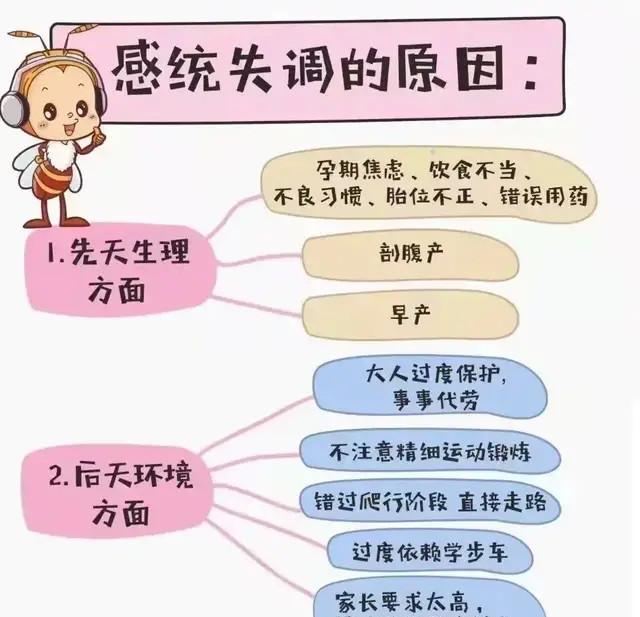"Sensory system disorder" is very common in today's society, it is neither a disease nor does it require medication, but it requires professional training!
However, in life, there are still many parents whose understanding and understanding of sensory system disorders are generally insufficient. When it comes to sensory integration training, I feel that it is more active and more exercise, and some parents even feel that the sensory integration class is just a general early education class. However, this is not the case, and there are still many differences in the essence of the sensory integration class and the early education class and the physical fitness class.

1. What is the difference between sensory integration classes and early education classes?
There is a big difference between the sensory integration class and the early education class, whether it is the age group or the content of the child's class.
1. The age group is different
Early education courses can generally be taken after the birth of children, and most of them are for preschoolers, especially children under 3 years old, and most of them apply for early education courses.
The Sensory Integration Program is mainly aimed at children before the age of 12. Before the age of 3, it is the critical period for the development of children's sensory ability, and this age group is mainly to prevent sensory system disorders; 3 to 6 years old is the golden period for children's sensory integration disorder training; 6 to 12 years old is the validity period for the development and correction of sensory integration ability. Beyond this period of time, sensory integration training generally will not have much effect.
2. The teaching method is different
Early education courses are generally a large class system, most of which require parents to participate in it, the course content is mainly to cultivate the parent-child relationship between parents and children, and teach parents how to better give their children good parent-child companionship.
Sensory integration training is generally a small class system, which requires children to participate in the training independently, and under the guidance of the sensory system trainer, the corresponding training content is carried out. The evaluator sets a personalized training program according to the child's physical ability development level, and scientifically solves the problems of inattention, timidity, hyperactivity, clinginess, lack of self-confidence, language development delay, grumpiness, and uncoordinated limbs caused by sensory system disorders.
3. The teaching content is different
Early education is mainly based on parent-child accompaniment and the development of children's strengths, and the content of the curriculum includes enlightenment education, physical fitness and senses, art and music.
The sensory integration course should pass through professional sensory integration teaching aids, and also cooperate with the guidance of professional sensory integration teachers. Unlike general physical activity or play, the key is to give children all aspects of stimulation information, involving the interrelationship between the mind, brain and body.
Second, what is the difference between sensory system training and physical training?
Physical training is mainly to strengthen the muscles and bones of children, it accounts for a large proportion of local muscle and bone function training, and the proportion of training of a certain sensory (audiovisual smell touch, vestibular, body) nervous system is relatively small.
Sensory system training is aimed at the child's sensory regulation and limb use ability activities, emphasizing pertinence, and can achieve a specific sensory training goal by designing a wealth of activities.
For example, for children with poor control of physical balance, sensory integration training will stimulate vestibular perception from multiple angles to improve balance. Physical training may just be running or doing a single exercise, which doesn't help much.
In addition to this, they have the following two differences:
1. The pertinence of the student program
Sports trainees are all a lesson plan, everyone is a unified action; sensory training emphasizes pertinence, and the training program varies from person to person.
2. Pertinence of functional training
Physical training is not targeted to improve some aspect of the child's sensory deficit. There are no specific requirements for whether the stimulation is sufficient or not, and whether it is targeted.
Sensory system training requires a high amount of targeted stimulation, and requires a professional instructor to help children improve.
Finally, experts remind that children born by caesarean section are "high-risk groups" with sensory system disorders.
Children's ability education, sooner rather than later!